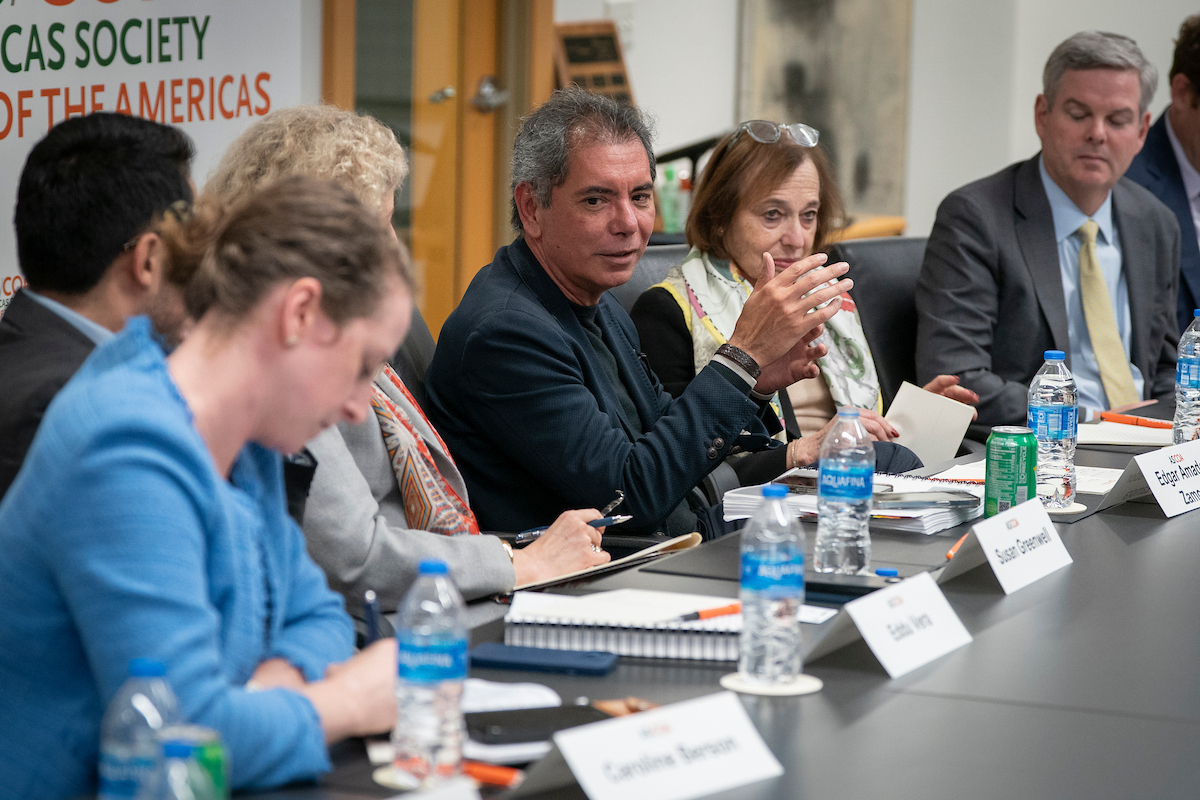Extraordinary Finds in Latin American Culture
Extraordinary Finds in Latin American Culture
"With the positive economic headlines dominating the news cycles, there is also a renewed interest in the history and culture" of Latin America, writes AS/COA's Susan Segal for The Huffington Post. Join Americas Society for the final days of Art and Myth in Ancient Peru: The History of the Jequetepeque Valley, closing October 23.
As we take a step back and look at Latin America it is exciting to see growth at record levels, a growing middle class, flourishing democracies, one cannot forget it is also thriving culturally. With the positive economic headlines dominating the news cycles, there is also a renewed interest in the history and culture.
As one looks at Peruvian culture either from 3,000 years ago or today, one thing remains: it is a people full of tradition, culture, and art. It is a country that has had its share of struggles, but also victories. It is also a country that has always embraced its culture and rich history. But, beyond the traditional images of Peruvian culture such as the Incas and Machu Picchu, there is so much more to see.
Currently on display at the Americas Society is a grand look at some pre-Colombian treasures: Art and Myth in Ancient Peru: The History of the Jequetepeque Valley. This exhibition, organized by the Museo de Arte de Lima (MALI), presents an important selection of objects that span from the time of the Cupisnique Culture to the Inca conquest. The pieces exhibited were produced in the Jequetepeque Valley of Peru for over 3,000 years, showing the developments that took place in the Northern region. This is the first time these treasures travel outside of Peru (see video).
At different times in its history, the Jequetepeque Valley formed part of the Mochica, Lambayeque, and Chimú states, and finally, of the Inca Empire. The societies that flourished there maintained certain autonomy with respect to these great developments. Their social organization and pottery styles thus preserved specific and differentiated cultural characteristics and represent a system of beliefs based on a universe of images and symbols that are expressed in the pieces exhibited, many of which are considered masterpieces of pre-Columbian art.
Two weeks ago on the literature front, Peruvian author Mario Vargas Llosa won the Nobel Prize, bringing long over-due attention to a country that is part of Latin America's success story. He is an author as well as an intellectual who provides readers a window onto Peruvian culture and society. I had the pleasure of hosting him at the Americas Society/Council of the Americas the week prior to winning the award to celebrate fellow Peruvian writer Inca Garcilaso and the four hundredth anniversary of the publication of Royal Commentaries. Vargas Llosa, like Garcilaso, is a writer who thought it imperative to capture Peruvian history on pages for historians and readers to enjoy for centuries.
So, as we take a look at Latin America, it is important that we look at the countries as a whole -- identity and success should not be wrapped up exclusively in charts and dollar figures but must also include the cultural success and contributions. It is exciting to see a renewed interest in Latin American culture as it is extraordinary what one finds.








